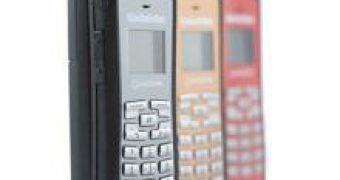I know people that always wanted to have coverage wherever they were. Most times they would ask me why is a mobile phone called "mobile", if, when you're on a mountain somewhere and you're almost going to be eaten by some kind of wild animal, let's say bears, they do the job pretty well I suppose, the cell phone suddenly decides you are out of the coverage area and you just don't have any other way to call the hunters that camped 10 miles away and tell them to come and rescue you.
That was a very extreme example, I know that, but I assure you no animals were harmed during the writing of it (no humans either.. yet :) ).
Seriously now, Globalstar, a joint-venture between Loral Corp. and Qualcomm, also with financial participation from companies like Deutsche Aerospace, Hyundai, Vodafone, Alcatel and Airtouch, has launched the next generation of satellite phones, impersonated by the GSP 1700 handset, the smallest and the lightest satellite handset that one can find on today's mobile market. What do I want to say by this? You're not going to be eaten by anything from now on because you're going to be "covered" and, if the case, you'll have the opportunity to make a call to your loved ones before it happens (if you're a fast talker that is).
The device works on the Globalstar Satellite CDMA mode and will offer you four hours of talk time and 36 of standby. You will also have coverage in 120 countries and having at your disposal an EV-DO modem, you will be able to stay online, literally, wherever you go and practice the web surfing 24/7.
With the launch of this new mobile device, Globalstar has shown all the world that satellite doesn't necessarily mean that you have to carry around a giant brick and they have also set a new standard for the other manufacturers of such handsets because GPS-1700 's measures will make any satellite phone before it to blush in shame.

 14 DAY TRIAL //
14 DAY TRIAL //